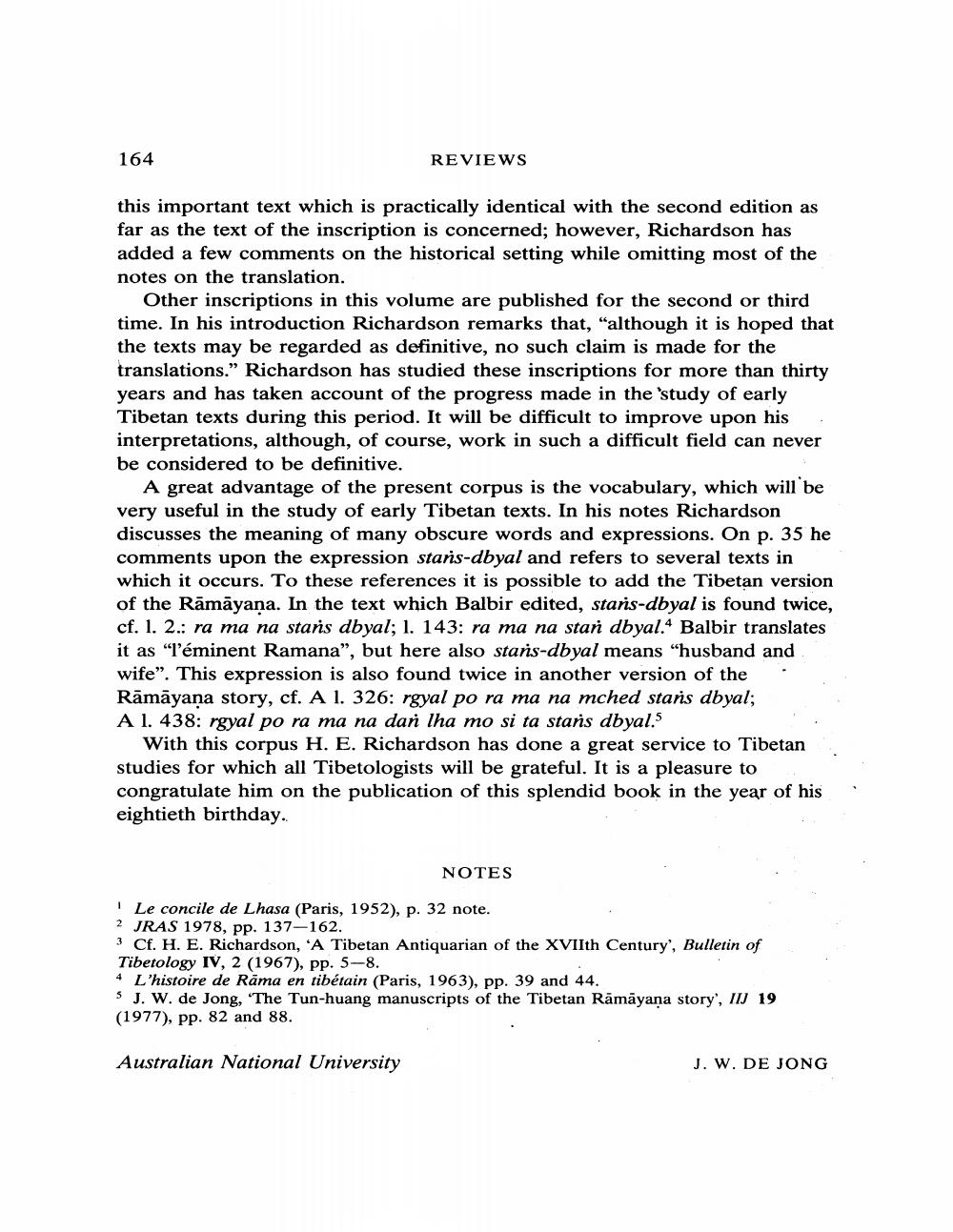________________
164
REVIEWS
this important text which is practically identical with the second edition as far as the text of the inscription is concerned; however, Richardson has added a few comments on the historical setting while omitting most of the notes on the translation.
Other inscriptions in this volume are published for the second or third time. In his introduction Richardson remarks that, "although it is hoped that the texts may be regarded as definitive, no such claim is made for the translations." Richardson has studied these inscriptions for more than thirty years and has taken account of the progress made in the 'study of early Tibetan texts during this period. It will be difficult to improve upon his interpretations, although, of course, work in such a difficult field can never be considered to be definitive.
A great advantage of the present corpus is the vocabulary, which will be very useful in the study of early Tibetan texts. In his notes Richardson discusses the meaning of many obscure words and expressions. On p. 35 he comments upon the expression stars-dbyal and refers to several texts in which it occurs. To these references it is possible to add the Tibetan version of the Rāmāyana. In the text which Balbir edited, stars-dbyal is found twice, cf. 1. 2.: ra ma na stars dbyal; 1. 143: ra ma na stań dbyal." Balbir translates it as "l'éminent Ramana", but here also stars-dbyal means “husband and wife". This expression is also found twice in another version of the . Rāmāyana story, cf. A 1. 326: rgyal po ra ma na mched stars dbyal; Al. 438: rgyal po ra ma na dari Iha mo si ta stars dbyal.5
With this corpus H. E. Richardson has done a great service to Tibetan studies for which all Tibetologists will be grateful. It is a pleasure to congratulate him on the publication of this splendid book in the year of his eightieth birthday.
NOTES
Le concile de Lhasa (Paris, 1952), p. 32 note. 2 JRAS 1978, pp. 137-162. 3 Cf. H. E. Richardson, 'A Tibetan Antiquarian of the XVIIth Century', Bulletin of Tibetology IV, 2 (1967), pp. 5-8. 4 L'histoire de Rama en tibétain (Paris, 1963), pp. 39 and 44. 5 J. W. de Jong, "The Tun-huang manuscripts of the Tibetan Rāmāyana story', III 19 (1977), pp. 82 and 88.
Australian National University
J. W. DE JONG




